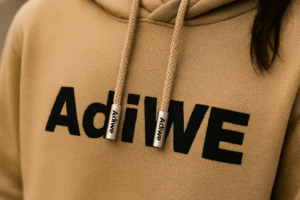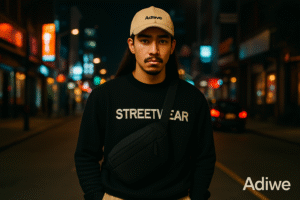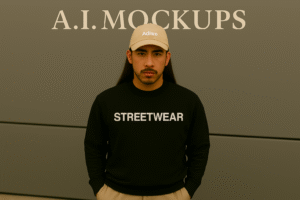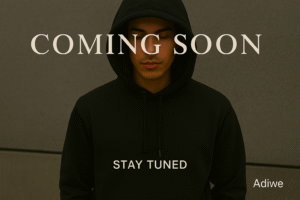Unsure how to get your unique streetwear designs made? Sampling seems complex, risky, and potentially expensive. I'll explain the clear steps to get perfect custom samples.
Custom streetwear sampling involves submitting your design, material specs, and fit requirements to a manufacturer. They then create a prototype for your review, approval, or revision before mass production.
Getting your streetwear vision into a real, touchable sample is exciting. For clients like Fifty Fifty, who create complex hoodies, the sampling stage is where their brand's unique identity starts to take shape. At Adiwe, we understand how vital this process is for B2B wholesale success. My factory, with its 5 production lines, has helped many trend brands and clothing brands navigate this. Let's break down how it typically unfolds, making sure your "very trendy" items come out just right.
What's the First Step in Getting a Custom Streetwear Sample Made?
Ready to make samples but don't know where to start? A wrong first step can waste time and money. I'll guide you through the essential initial action.
The first step is preparing a detailed tech pack. This includes design sketches, measurements, fabric choices, color codes, and details for logos, prints, or embroidery for your t-shirts or hoodies.
!
A comprehensive tech pack is truly the foundation of successful custom streetwear sampling. Think of it as the blueprint for your garment. At Adiwe, when a client like a trend brand or a clothing brand approaches us for B2B wholesale, the clarity of their tech pack directly impacts the accuracy of the first sample. We've seen this time and again with clients from North America and England. A good tech pack saves everyone time and helps us deliver top quality.
Key Elements of a Tech Pack for Sampling:
- Design Illustrations: You need clear drawings. These should show the front, back, and any side views of your t-shirt, hoodie, or other streetwear item. The more detail, the better.
- Measurements & Sizing: A detailed size chart is crucial. This should be for your target customer. Consider the fit you want – oversized, slim, etc.
- Material Specifications: Tell us the type of fabric you want. For example, 100% cotton, a polyester blend, or specific customizable fabrics. Include the weight (GSM) and any special finishes. This is key for achieving that "very trendy" feel.
- Color Information: Pantone codes are the best way to ensure color accuracy. This avoids any surprises when the sample arrives.
- Artwork Details: This covers placement, size, and the type of application for logos, prints, embroidery, and other personalized design elements. This is where your brand's unique character comes through.
- Construction Details: Specify stitching types, seam finishes, and any special craftsmanship required. Complex styles, common in streetwear, need this clarity.
- Trims and Accessories: List any zippers, buttons, drawstrings, custom labels, or hangtags.
Providing this detailed information helps us at Adiwe create a sample that truly reflects your vision for top-quality streetwear. It minimizes misunderstandings and speeds up the process. This is especially important for clients who have very specific or complex designs. We know many manufacturers struggle to reproduce designs accurately, so a solid tech pack is your first line of defense.
How Long Does Custom Streetwear Sampling Usually Take?
Eager to see your design, but sample timelines are unclear? Delays can disrupt launch plans and miss market trends. I'll explain typical sampling durations and influencing factors.
Custom streetwear sampling typically takes 1 to 4 weeks. This depends on design complexity, material availability, factory workload, and the number of revisions needed for your t-shirts or hoodies.
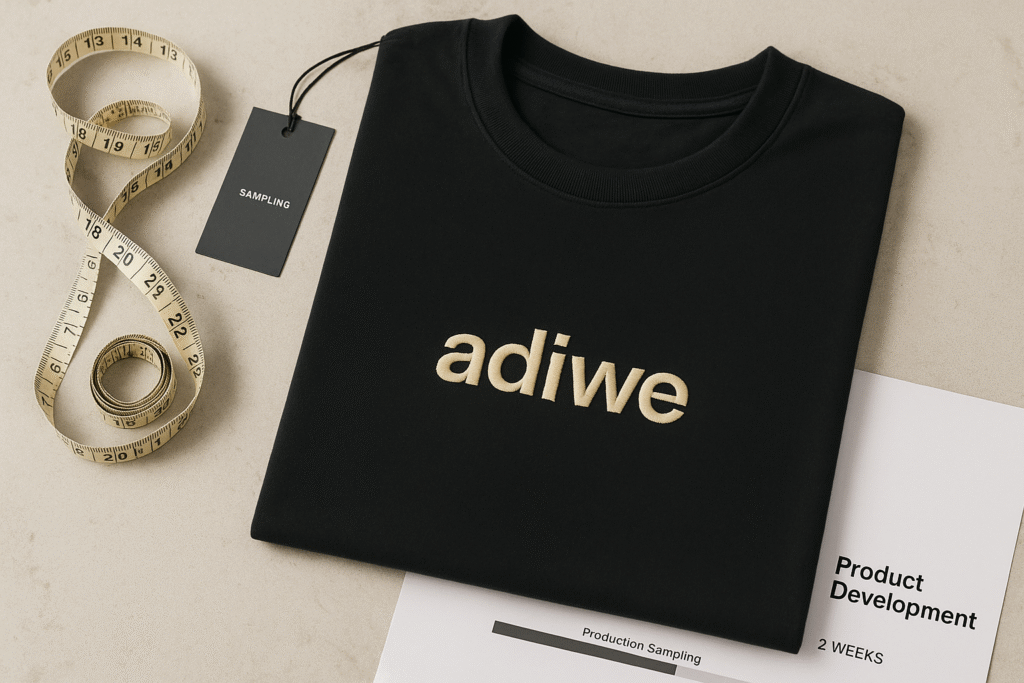
The timeline for creating a custom streetwear sample is a common question from our B2B wholesale clients. At Adiwe, we aim for efficiency from our factory in China, but several factors influence the duration for your t-shirts or hoodies. We want to get your personalized design into your hands as quickly as possible.
Factors Affecting Sampling Time:
- Design Complexity: A simple t-shirt sample will naturally be faster to produce than a multi-panelled hoodie. If your design includes intricate embroidery, custom accessories, or complex craftsmanship, it will take longer. "Very trendy" items often have these features.
- Material Sourcing: If your design requires unique customizable fabrics that aren't readily available in our stock, sourcing them can add time. We have a strong supplier network here in China for top quality materials, but some special requests might take a few extra days or weeks.
- Clarity of Tech Pack: A clear, detailed tech pack, as I mentioned earlier, significantly speeds things up. If we have fewer questions, we can start production faster.
- Factory's Current Schedule: Our 5 production lines might be busy with other orders for clients in North America, England, or French markets. We always try to fit in sample production efficiently and will give you a realistic timeframe.
- Number of Revisions: If the first sample isn't exactly what you envisioned and needs changes, each revision cycle adds to the overall time. This is why getting the tech pack as accurate as possible from the start is so important. For example, a client like Fifty Fifty with a complex hoodie design might see a slightly longer initial sample time. However, because they often provide very detailed specifications, the need for revisions might be less. We always communicate expected timelines clearly.
| Factor | Typical Impact on Timeline | Adiwe's Approach to Minimize Delays |
|---|---|---|
| Simple Design | 1-2 weeks | Quick turnaround, often leveraging stock materials. |
| Complex Design | 2-4 weeks (or more) | Detailed pre-production review, careful execution of craftsmanship. |
| Custom Fabric Sourcing | Adds 1-2 weeks (approx.) | Utilize our strong local supplier network, provide transparent updates on sourcing. |
| Revisions | Adds 1 week per revision | Focus on clear initial communication and tech pack review to minimize changes. |
Understanding these factors helps set realistic expectations. We want your sampling experience to be smooth.
What Costs Are Involved in Streetwear Sampling?
Worried about unexpected sample costs blowing your budget? Hidden fees can make sampling seem too expensive for your brand. I'll detail the common expenses in streetwear sampling.
Streetwear sampling costs typically include material sourcing, pattern making, labor for cutting and sewing, and shipping. Complex designs or multiple revisions will increase the overall sample cost.
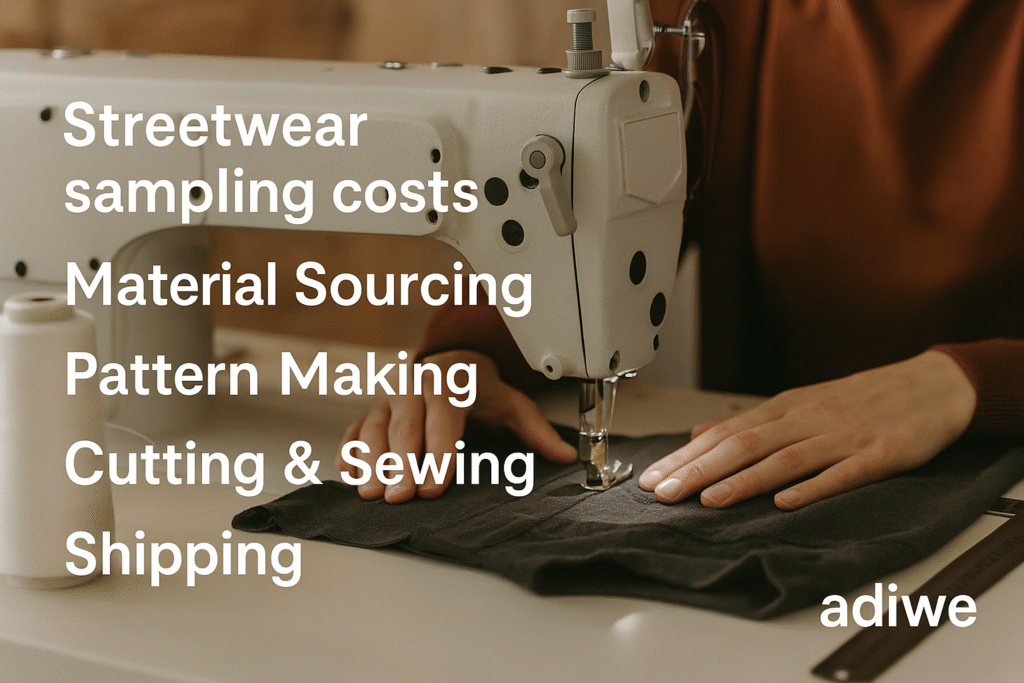
Understanding the costs associated with custom streetwear sampling is essential for any trend brand or clothing brand, especially when working on a B2B wholesale basis. At Adiwe, we believe in transparency with our clients, including those like Fifty Fifty from England who look for top quality and competitive prices.
Breakdown of Sampling Costs:
- Pattern Making: For any new design, a unique pattern needs tobe created by skilled technicians. This is the template for your garment. The complexity of your t-shirt or hoodie design directly affects this cost. More intricate designs require more time for pattern development.
- Material Costs: This covers the actual customizable fabrics, threads, and any specialized notions. These include zippers, buttons, drawstrings, or other accessories. Opting for premium or very specific top quality materials will influence this part of the cost.
- Labor: This is the cost for the skilled workers who cut the fabric, sew the sample, and apply any finishing touches. Intricate craftsmanship or detailed personalized design elements require more labor hours, impacting the cost. Our factory in China has experienced staff for this.
- Special Treatments & Embellishments: If your "very trendy" design involves unique washes, dyes, screen prints, digital prints, or embroidery for logos, these specialized processes add to the sample cost.
- Shipping: This is the cost to send the physical sample from our factory to your location, for instance, from China to North America or France. Express shipping will be more expensive but faster.
It's important to know that sample costs are usually higher per piece than the unit costs in bulk production. This is because a sample is a one-off item. It requires dedicated setup, individual attention from our team, and doesn't benefit from economies of scale. However, many manufacturers, including Adiwe, often refund or credit the sample costs if you proceed with a bulk B2B wholesale order over a certain quantity. This is a common practice and helps make sampling more accessible. We always provide a clear cost breakdown before starting any sample work.
| Cost Component | Description | Impact on Streetwear Samples (e.g., t-shirts, hoodies) |
|---|---|---|
| Pattern Making | Creating the specific blueprint for the garment. | Higher for designs with many pieces, unusual shapes, or complex fits. |
| Materials | Cost of fabric, trims, custom labels, accessories. | Premium, imported, or highly customizable fabrics will increase this cost. |
| Labor | Time for cutting, sewing, and finishing. | Intricate craftsmanship, detailed personalized designs, and handwork add cost. |
| Special Processes | Printing, embroidery, custom logos, washes, dyes. | Each specialized process has its own setup and application cost. |
| Shipping & Handling | Cost to send the completed sample to the client. | Varies by destination, weight, and chosen shipping speed. |
We work to ensure these costs are clear and fair.
Why is the Sampling Process So Crucial for Streetwear Brands?
Tempted to skip sampling to save time or money on your streetwear? This can lead to costly production errors and unhappy customers. I'll explain why samples are a non-negotiable quality step.
Sampling is crucial because it allows you to verify design accuracy, fit, material quality, and craftsmanship before committing to bulk production. It minimizes risks and ensures your final streetwear meets expectations.
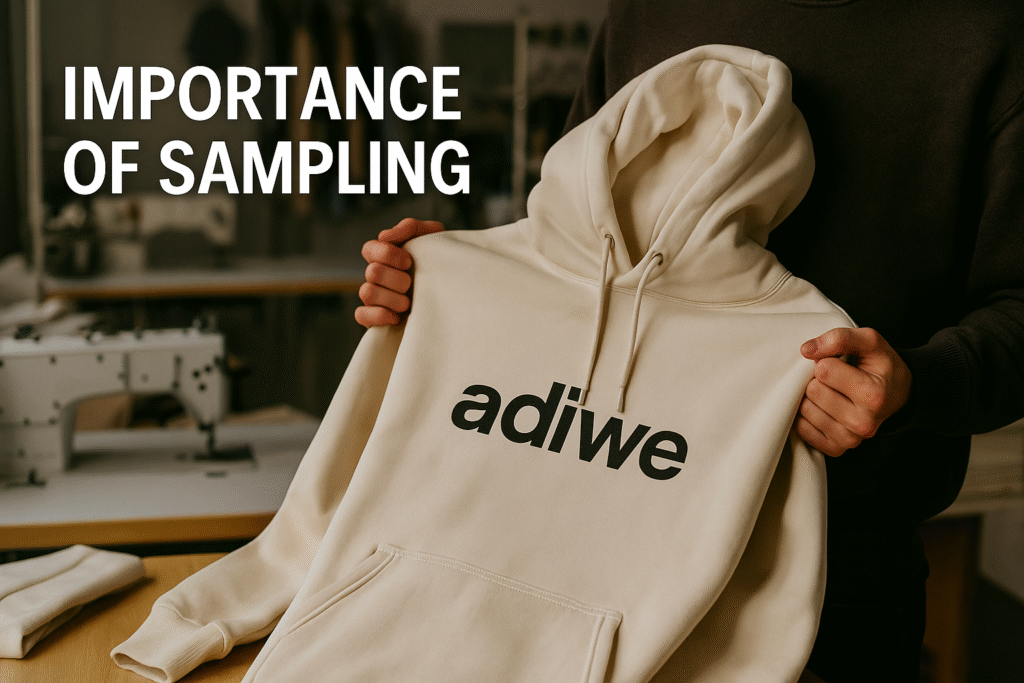
The sampling stage is absolutely vital in streetwear production. I can't stress this enough to my B2B wholesale clients who are building their trend brand or clothing brand. For a company like Fifty Fifty, whose entire brand reputation relies on delivering top quality and unique designs for their hoodies and t-shirts, the sample is their first real quality check. It’s where they confirm their vision.
Key Reasons Sampling is Essential for Your Streetwear:
- Validating the Design: A physical sample allows you to see if your creative vision for a t-shirt or hoodie translates well from a sketch or digital file to an actual garment. Does the personalized design look as you imagined? Are the proportions correct?
- Checking Fit and Comfort: Streetwear is all about the look and the feel. The sample lets you test the fit on a model, a fit mannequin, or even yourself. Is it comfortable? Does it drape correctly? Does it match the "very trendy" silhouette you're aiming for?
- Assessing Material Quality and Feel: You can touch, stretch, and feel the customizable fabrics. Is the quality up to your brand's standard? Does it feel right for the intended season or use? Is it durable?
- Evaluating Craftsmanship and Construction: This is where you inspect the details. Check the stitching quality, seam finishes, the application of logos (print, embroidery), and any special construction techniques. For complex styles requiring a lot of craftsmanship, which is common in streetwear, this step is critical. My factory, Adiwe, prides itself on delivering top quality here.
- Making Revisions and Catching Errors Early: The sample provides the opportunity to make necessary changes before producing hundreds or thousands of units. Catching a design flaw, a fit issue, or a material problem at the sample stage is far cheaper and much easier to correct than discovering it after mass production has begun or, worse, completed. This directly addresses a major pain point for clients: "Many manufacturers are unable to fully reproduce their designs." A good sampling process helps identify this risk early with any supplier.
Ultimately, sampling protects your financial investment and your brand's reputation. It’s the primary way we ensure our products meet the "top quality" standard demanded by clients exporting to demanding markets like North America, England, and France. It’s a cornerstone of our B2B wholesale business model at Adiwe.Conclusion
Custom streetwear sampling is a key step. It ensures your personalized design, fit, and top quality are perfect before full production begins for your brand.

